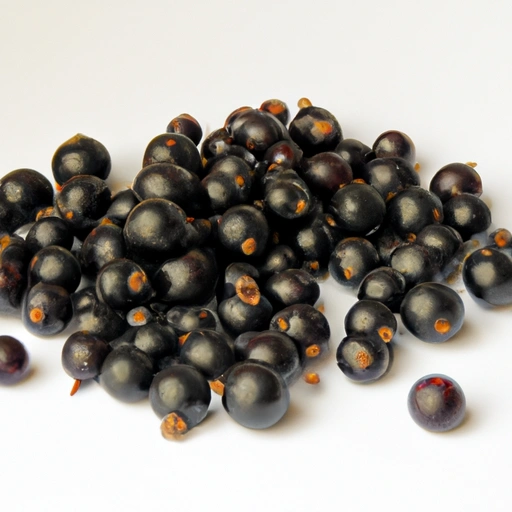Blackcurrant
Description

Blackcurrant is a small, tart berry renowned for its deep purple color and intense flavor. Known scientifically as Ribes nigrum, this berry is packed with nutrients and has been a staple in food recipes across Europe and, to a lesser extent, America. The versatile blackcurrant can be used in a plethora of culinary creations, ranging from sweet to savory dishes, and is often available fresh, frozen, or in a variety of processed forms such as jams, jellies, and syrups.
Common uses
Blackcurrants are commonly used to make preserves, liqueurs, and desserts. They are also found in teas and health supplements for their high vitamin C content. In savory dishes, blackcurrants can be used to create rich sauces that pair well with game and red meats. Their distinct tart flavor can add depth to a dish or be balanced with sweeter ingredients.
Nutritional value
Calories
A 100g serving of fresh blackcurrants contains approximately 63 calories (263 kilojoules).
Protein
Blackcurrants provide about 1.4g of protein per 100g serving.
Fat
These berries are low in fat, with around 0.4g per 100g serving.
Carbohydrates
Carbohydrates in blackcurrants amount to about 15.4g per 100g serving, primarily from sugars and dietary fiber.
Vitamins
Blackcurrants are exceptionally rich in vitamin C, providing 181mg per 100g serving, which is over 300% of the daily value (DV) based on a 2000 calorie diet. They also contain good amounts of vitamins A and E.
Minerals
The berries are a source of potassium, providing around 322mg per 100g serving, and also contain calcium, phosphorus, and magnesium.
Health benefits
Blackcurrants offer a range of health benefits due to their high vitamin C and antioxidant content. They support immune function, skin health, and may reduce the risk of chronic diseases. The anthocyanins in blackcurrants have been researched for their potential to improve eye health, reduce inflammation, and exhibit anti-carcinogenic properties.
Potential risks
Blackcurrants are generally safe for most people, but those taking blood thinning medications should be cautious due to the vitamin K content. Additionally, individuals with a sensitivity to salicylate may need to avoid blackcurrants as they contain this substance.
Common recipes
Blackcurrants are frequently used in recipes for jams, jellies, desserts like pies and tarts, and beverages such as cordials and wines.
Cooking methods
These berries can be eaten raw, but are often cooked or processed. Cooking methods include simmering, baking, and blending into purees or sauces.
Pairing with other ingredients
Blackcurrants pair well with other berries, citrus fruits, apples, mint, almond, and dairy products such as cream and yogurt. They also complement richer flavors like venison or duck.
Summary
Blackcurrant is a flavorful and nutritious berry that enhances a variety of dishes. With its rich history and versatile use in both sweet and savory recipes, blackcurrant is a valuable ingredient to chefs and home cooks around the world. Whether used fresh, in preserves, or as flavoring, blackcurrants contribute a unique zest that is sure to elevate any meal.